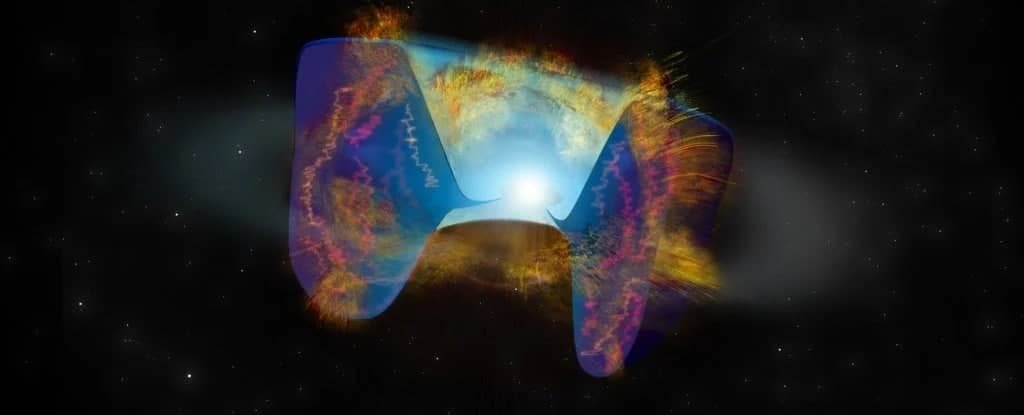Astronomers have recently discovered a new type of supernova which is about 500 million light-years away from earth. This huge eruption, named a merger-triggered core-collapse supernova, happens when two stars merge or collide with each other.
But such an incident has never been seen before. The star is likely to go through a premature explosion after it bumped into a dense object, which may be a black hole or maybe a neutron star, making a unique identification in the sky.
This all started in 2017 when an astronomer named Dillon Dong observed a weird and unknown signal by the Very Large Array Sky Survey (VLASS), which is basically scanning the cosmos continuously and trying to figure out radio resources.
This specific signal, referred to as VT 1210+4956, was an intense bright pulse of radio waves. Dong estimated that the most likely reason for the flare was a star in the process of going supernova which developed radio signals when ejected material came in contact with a gas envelope that the star had shed 100 years earlier.
But another Caltech astronomer, Anna Ho, suggested that signs may reside in different types of signals other than radio. Thus the team also looked for another catalog of short-lived X-rays. The team came across one that lined up with radio source VT 1210+4956 in space, but many years earlier.

Dong says, “These two incidents have never been associated or similar to each other and they are very rare on their own”.
The team accepted a scenario after intense research and modeling, astronomers suggest that the star was constantly orbited by highly compact stellar corpses, mostly which can be a black hole but if looked at potentially then it can be a neutron star.
The intense gravitational pull of this object probably slurped gas off of the star over time. Some of it may be thrown off into space which then forms a “donut” shape around the star.
The stellar corpse pulled into the star due to which it erupted suddenly in a supernova before its time. The X-ray signals are then produced because of the ejection of material from the core of the star. And then years later the eruption may reach the gassy donut surrounding it producing radio waves that are detected by VLA Sky Survey.
Gregg Hallinan, professor of astronomy at Caltech says, “Big stars generally erupted as supernovae when their nuclear fuel ended. But in this, black hole or neutron star has prematurely triggered its nearer star to explode.”

1 Comment
Pingback: Scientists Discover A Parasitic Black Hole That Eats Star From Inside Out - Craffic